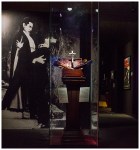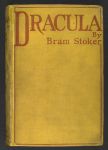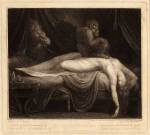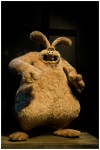Question: what does Horace Walpole have in common with Jack the Ripper? How is Alexander McQueen connected to the Brontë sisters?
Answer: they all feature in the British Library’s new exhibition, ‘Terror and Wonder: The Gothic Imagination’. This smart, engaging show looks at the development of ‘Gothic’ culture through its literature, architecture and other cultural manifestations. Tracing a line from Walpole’s 1764 sensational novel The Castle of Otranto, to present-day Goth kids in lashings of black eyeliner, the show probes beneath Gothic’s darkly glamorous surface to consider the movement as a mode of cultural subversion, and a liberation of both body and mind.
As ‘Terror and Wonder’ makes clear, the Gothic was – and is – a complex movement, encompassing many apparent contradictions. Playful and terrifying, beautiful and grotesque, highbrow and vulgar, sexy and macabre: Gothic meant different things in different times and places. It shifted from Walpole’s literary protest against the cold rationalism of the 18th century, to the cheap thrills of the Victorian ‘penny dreadful’. With war and industrialisation, the Gothic became less exotic and more familiar; the smoke-blackened slums of the 19th century provided ample fodder for tales of death and decay.
The aesthetes of the 1890s rescued Gothic from lowbrow ignominy, and formulated it as a way of understanding and experiencing the body in all its pleasures and pains. This, of course, underpins Bram Stoker’s Dracula, which gets its own devoted display space, and which set the tone for the Gothic narrative going into the 20th century and the age of Hollywood horror. Finally, the development of the Goth subculture, and its connections to punk, anime and fashion, wrap up the show in a satisfyingly tongue-in-cheek way.
It’s a compelling narrative, woven from manuscripts, film posters, book illustrations and prints; as well as the occasional non-paper object, including mourning-dress, a Victorian ‘vampire-slaying kit’ of acknowledged dubious provenance, and the original ‘Were-Rabbit’ of Wallace and Gromit fame. Helped along by text and labels which manage to balance depth with accessibility, this show is very much in keeping with the British Library’s strength as an exhibiting institution: rigorous but fun introductions to complex cultural and historical topics.
A final word must be reserved for the design of the space, with ominous archways painted in suitably gloomy shades of blue and black, and spectral black curtains hung to delineate different display areas. You don’t need to have spent your teenage years scribbling pentagrams on your schoolbooks to enjoy this deliciously dark exhibition crypt.
‘Terror and Wonder: The Gothic Imagination’ is at the British Library, London, until 20 January 2015.
Related Articles
Intelligent Design: Beautiful Science at the British Library (Peter Crack)
First Look: ‘Comics Unmasked’ at the British Library (John Harris Dunning)








